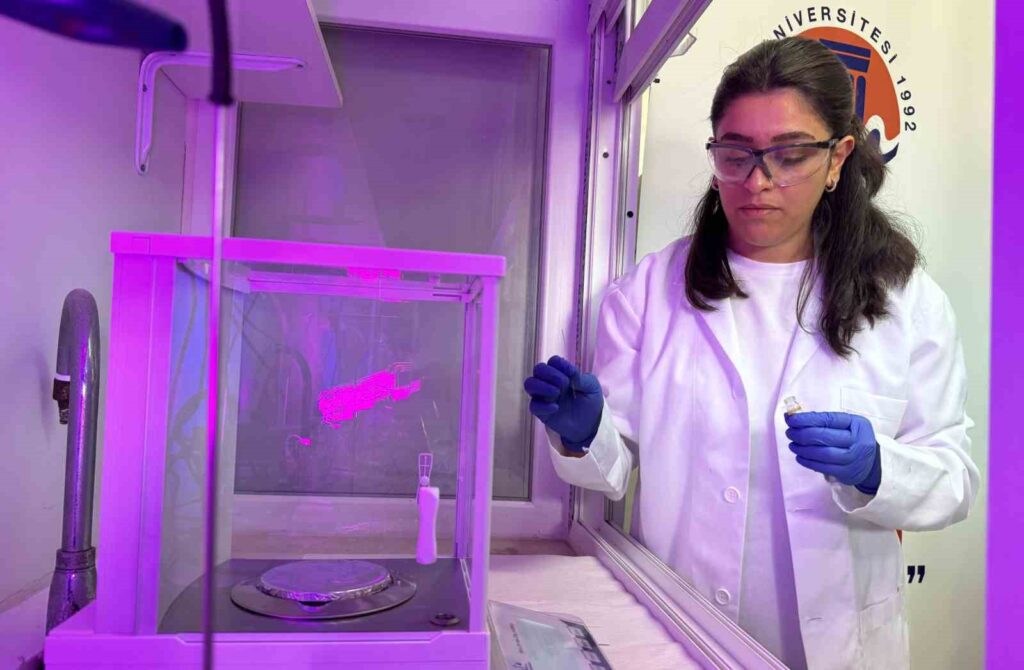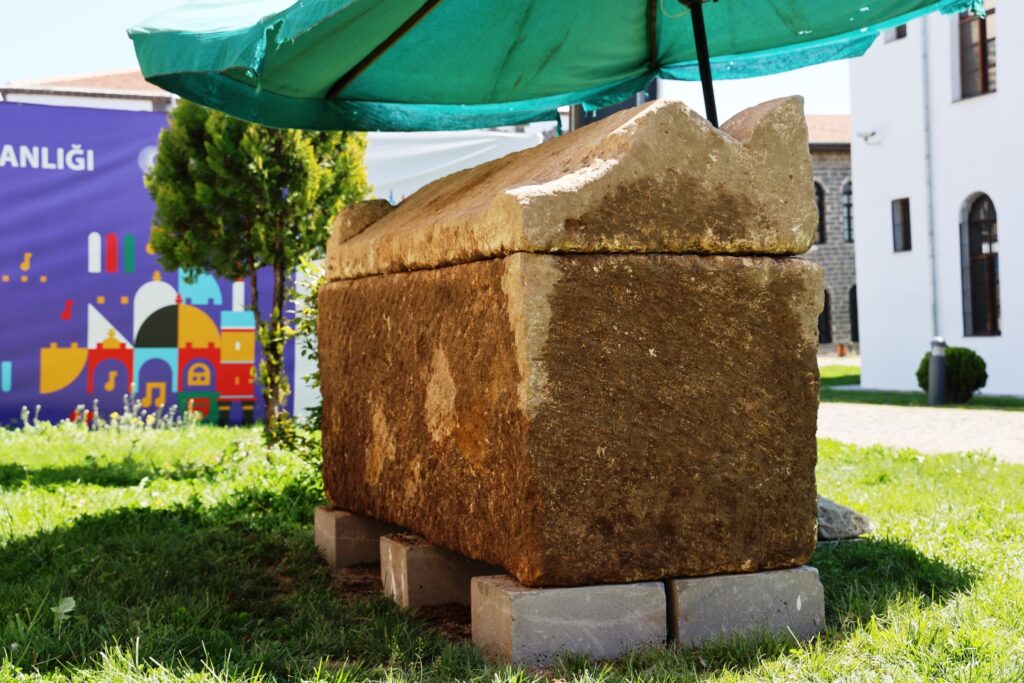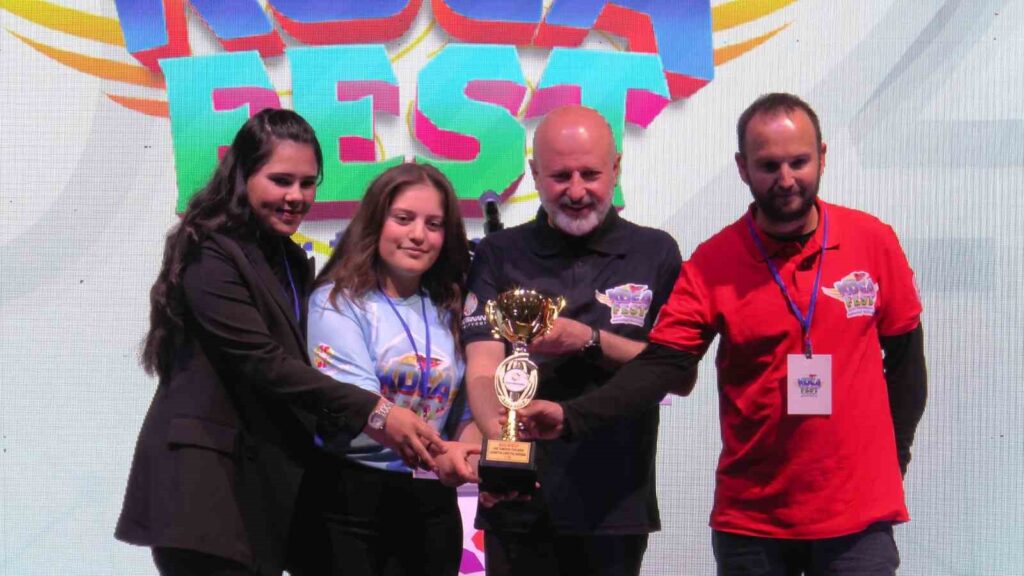A new environmentally friendly method has been developed for the synthesis of drug metabolites
As part of the project conducted at Mersin University (MEU), the aim is to introduce the environmentally friendly new method developed for the synthesis of drug metabolites to the scientific world. The new method, 70% of which has been completed, aims to improve the current…

Within the project carried out at Mersin University (MEU), the aim is to introduce the environmentally friendly new method developed for the synthesis of drug metabolites to the scientific world. It was reported that the new method, with 70% completion, will be the first method using the environmentally friendly photo redox technique to overcome the shortcomings of existing methods. Associate Professor Dr. Özgür Yılmaz from the Department of Chemistry at the Faculty of Science at MEU aims to develop a new environmentally friendly method not available in Turkey and worldwide with the approved TUBITAK project. The TUBITAK 1002 project titled ‘Development of a New Method with High Functional Group Tolerance for N-Dealkylation Reaction of Tertiary Amines and Synthesis of Drug Metabolites’ will last for 10 months, with the participation of 6 students, 3 of whom are master’s and 3 are undergraduate students.
Providing information about the project they are working on, Yılmaz mentioned the concept of xenobiotics, stating that xenobiotics can be classified as any type of unnatural foreign chemicals encountered by humans throughout their lives. Giving examples of xenobiotics such as cosmetics, detergents, industrial chemicals, food additives, pesticides, Yılmaz stated that it is known through scientific studies that an individual is exposed to approximately 1 to 3 million xenobiotics throughout their lifetime. Yılmaz explained that drugs are also classified as xenobiotics, and the body works with various enzymes to eliminate these foreign chemicals taken to prevent disrupting its own mechanism. In the method they are trying to find, they attempted to mimic this biotransformation occurring in the body in a laboratory environment.
Regarding the importance of the method for the pharmaceutical industry, Yılmaz mentioned that before developing a new drug in the pharmaceutical industry and launching it on the market, it is necessary to determine which types it will transform into within the body under laboratory conditions. Yılmaz emphasized that the body transforms active species into inactive ones to excrete them, but this does not always happen. In recent scientific studies, it has been determined that the transformed species can also be toxic when drugs are converted into metabolites, that is, when that biotransformation occurs in the body. Therefore, before releasing a new drug, it is essential to determine the species that can be transformed within the body, their toxicity, and activities in the laboratory environment. The goal of their project is to synthesize the species that can be transformed within the body, especially those containing tertiary amines, and to develop a method to examine their effects and toxicities.
Yılmaz highlighted that although there are methods used for this purpose in the literature, these methods have certain limitations. He emphasized that some require very expensive conditions, some are not environmentally friendly, some require very harsh conditions, and some can only be applied to a limited number of drug active substances. They aimed to develop a new method that can eliminate all these shortcomings of the known methods in the literature, using a more environmentally friendly approach, especially utilizing light energy. Yılmaz stated that they plan to provide scientific benefits, especially for the pharmaceutical industry, by presenting this developed method to the literature with the results they have obtained. The main goal of their project is this.
Yılmaz stated that currently 60-70% of the project has been completed, and they have optimized their methods. They conduct optimization studies beforehand to determine under which conditions it works better, where high yields can be obtained, and which solvent is more suitable. They completed their preliminary work, optimized and identified the best conditions. They are currently in the application phase, trying to carry out reactions of known drugs containing tertiary amine groups in the market. They are trying to determine whether these reactions occur as desired, and whether they can mimic the transformation in the body and achieve it. Yılmaz mentioned that in some studies they have conducted, they achieved very high yields with drug active substances and determined that their method is successful.
Stating that they will continue working on drug active substances, Yılmaz said that they plan to complete the project, turn it into a scientific article, and publish it in an international journal. After the publication of the article, Yılmaz emphasized that their primary goal, with the support of Mersin University, is to apply for a patent for the method they have developed. Following the patent application, they plan to discuss the industrial applicability with various companies along with feedback.
Yılmaz noted that the project they are conducting is also important in terms of training researchers. Yılmaz emphasized that there are undergraduate and graduate students academically involved in the project, saying, ‘In terms of training researchers, this continuity must never end. Of course, with the support we receive from both our university and TUBITAK, we support students with scholarships. Our students participate in these projects as scholarship holders and have the chance to train themselves to become future professors, future academics, future scientists, and women in science by working on these projects scientifically. In this project, we have 6 students working, 3 of whom are undergraduate and 3 are graduate students. Without the contribution of our students, it would not be possible to carry out these projects.’
Yılmaz mentioned that techniques are being developed, and methods are being sought through the development of techniques, especially in the field of chemistry. Yılmaz pointed out that the technique they used involves photo-redox reactions, which have become popular since 2014. Referring to photo-redox reactions, which are reactions triggered by light, Yılmaz stated that they use light energy. By using light to activate the system, they accomplish the transformation that chemicals would undergo through light. This makes the method more environmentally friendly. While they did not develop the photo-redox technique, which has been used by many scientists in recent years, they developed a new method for the synthesis of drug metabolites by using the photo-redox technique, which will be the first method using the environmentally friendly photo-redox technique.







